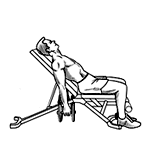
Periodization refers to how one’s training is broken down into discrete time periods. This system of training is typically divided up into three types of cycles: microcycle, mesocycle, and macrocycle. The microcycle is generally up to 7 days. The mesocycle may be anywhere from 2 weeks to a few months and can further be classified into preparation, competition, peaking, and transition phases. The macrocycle refers to the overall training period, usually representing a year.
At times no matter how hard or how often you work out, you just can’t seem to progress any further. You’re stuck on a plateau. It may be that the exercise you have been doing has worked so well that your body has adapted to it. You need to “shock” or “surprise” your body a bit. You need to give it a new challenge periodically if you’re going to continue to make gains. To prevent this “Periodizing” a training is the key. Instead of doing the same routine month after month, you change your training program at regular intervals or “periods” to keep your body working harder, while still giving it adequate rest.
At times no matter how hard or how often you work out, you just can’t seem to progress any further. You’re stuck on a plateau. It may be that the exercise you have been doing has worked so well that your body has adapted to it. You need to “shock” or “surprise” your body a bit. You need to give it a new challenge periodically if you’re going to continue to make gains. To prevent this “Periodizing” a training is the key. Instead of doing the same routine month after month, you change your training program at regular intervals or “periods” to keep your body working harder, while still giving it adequate rest.
Periodization is most widely used in resistance program design to avoid over-training and to systematically alternate high loads of training with decreased loading phases to improve components of muscular fitness.
Below is an example of a training programme for a high school student who is eager to gain some muscle mass. He is anxious to get stronger so that he can go out for the wrestling team. Since he is a teen of about 14 years old, as a trainer I would not use the same approach for his training programme as I would for adults, for this reason I would need his parents’ consent and also try to ensure that they are aware of the training programme I would want to start with him. He would also need to complete a full physical examination by a medical practitioner before starting his training programme. It is also important that his diet is discussed and he understands the role it will play in meeting his fitness objective.
To bulk him a little, I will start off with his reps in the 8-10 range, and sets at 3-4. An assessment of his muscle strength will guide me as to how much weight he can manage for each exercise. I do not know how much training experience he has so it would be important to do all the exercises properly so that he does not hurt himself.
Below is an example of a training programme for a high school student who is eager to gain some muscle mass. He is anxious to get stronger so that he can go out for the wrestling team. Since he is a teen of about 14 years old, as a trainer I would not use the same approach for his training programme as I would for adults, for this reason I would need his parents’ consent and also try to ensure that they are aware of the training programme I would want to start with him. He would also need to complete a full physical examination by a medical practitioner before starting his training programme. It is also important that his diet is discussed and he understands the role it will play in meeting his fitness objective.
To bulk him a little, I will start off with his reps in the 8-10 range, and sets at 3-4. An assessment of his muscle strength will guide me as to how much weight he can manage for each exercise. I do not know how much training experience he has so it would be important to do all the exercises properly so that he does not hurt himself.
